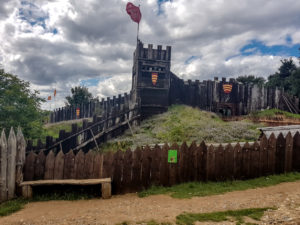Braemar Castle is situated near the village of Braemar in Aberdeenshire, Scotland. It is a possession of the chief of Clan Farquharson.
From the Late Middle Ages, the castle was a stronghold of the Earls of Mar. The present Braemar Castle was constructed in 1628 by John Erskine, Earl of Mar, as a hunting lodge and to counter the rising power of the Farquharsons, replacing an older building, which was the successor of nearby Kindrochit Castle, which dates from the 11th century AD. The siting of Kindrochit Castle was based upon the strategic location of this site relative to historic crossings of the Grampian Mounth.
An important garrison after the 1745 Jacobite rising, Braemar Castle had been attacked and burned by John Farquharson, the Black Colonel of Inverey during the Jacobite rising of 1689, to prevent it being used as a garrison by Government troops. In 1716 the castle was forfeited to the Crown following the Earl of Mar’s leadership of 1715 Jacobite rising. The castle and lands were purchased by John Farquharson, 9th Laird of Invercauld but the building was left in ruins until 1748.







